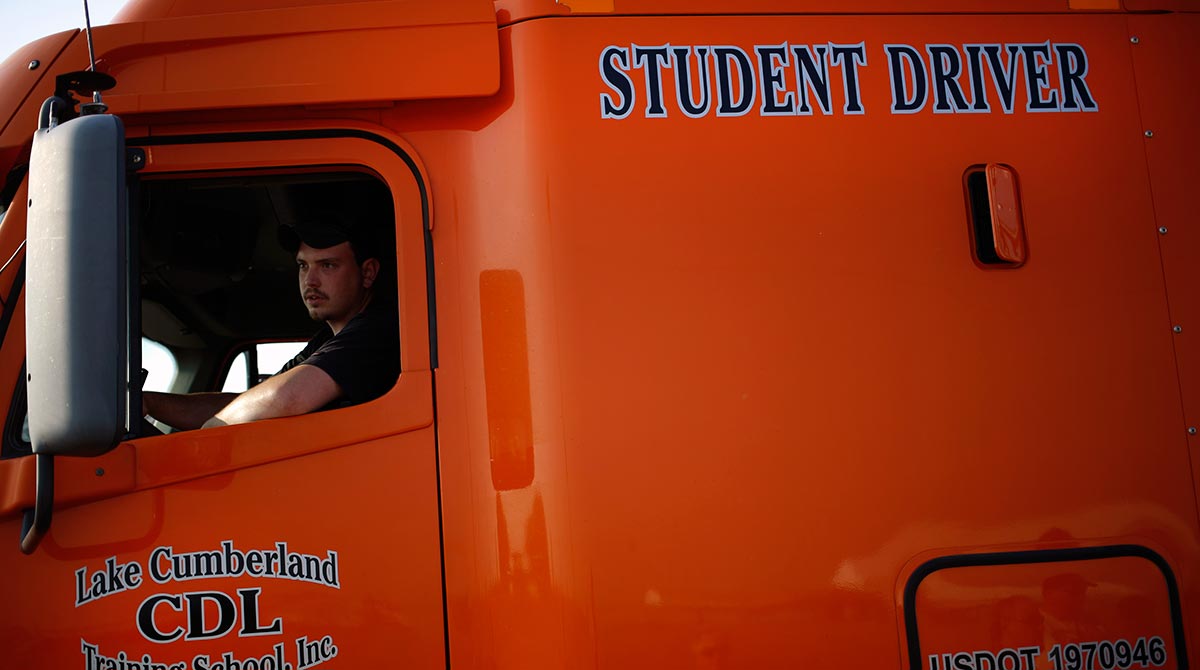California Bill Expands on Federal Training Requirements for Truckers

Gail-Jean McGuire’s son died when a big-rig truck slammed into his Honda Accord and nine other vehicles on Highway 17 in California three years ago. Today, she still avoids the accident-prone highway between Silicon Valley and her Westside Santa Cruz home.
But she hopes California highway safety will improve after a bill was introduced Jan. 19 in the California state Senate, calling for unprecedented regulations of behind-the-wheel training.
“I’ve not been able to drive on highways since,” McGuire said.
Sen. Bill Monning, (D-Carmel), introduced Senate Bill 158 that would require 30 hours of driving time for a Class A commercial driver license and 15 hours for a Class B license. Class A licenses are permitted for vehicles of more than 26,001 pounds with additional loads of 10,000 pounds, according to dmv.org. A Class B license permits vehicles of the same size with additional loads up to 10,000 pounds.
Monning told the Sentinel that the bill is applicable to all California highways.
“When tragedies like this happen, often, families and loved ones look for a legislative solution,” Monning said. “Not every tragedy translates to a legislative solution. However, when we looked at this, that exploration showed that it’s a statewide problem. Federal regulations have been in the pipeline for years.”
Daniel McGuire was on his way to work at about rush hour July 10, 2014, when a big rig collided with 10 vehicles on northbound Highway 17 near the Lexington Reservoir. McGuire was partially ejected from his car and seven others were injured, according to the California Highway Patrol.
Monning said the bill has been supported by major trucking companies.
“They have a huge investment in their equipment. They have drivers who are on the road all the time,” Monning said. “The trucking industry has taken a keen interest in this issue.”
California Trucking Association leaders are reviewing language of the newly introduced bill, said R.J. Cervantes, the director of the organization's legislative affairs.
“We look forward to working with the senator on this,” Cervantes said. “The industry is committed to safety. We don’t have an official position on the legislation.”
In December, the Federal Motor Carrier Safety Administration approved rules requiring minimum training standards for entry-level commercial drivers and orders to complete prescribed programs of instruction by a school listed on the administration’s registry.
Cervantes said the federal process has been lengthy regarding the creation of new rules by FMCSA. Those rules have no requirement for behind-the-wheel training.
“Out of that process came a negotiated rule that the states will need to implement,” Cervantes said. “Our goal is to align the legislation as seamlessly as possible with the federal guidelines that just came out.”
He also said those guidelines are the first federal entry-level driving requirement ever unveiled.
McGuire said behind-the-wheel training is crucial to ensuring safety from all drivers, even those who matriculate through small schools.
“The behind-the-wheel training would just be a few more restrictions,” she said. “We’re moving into a new era with more trucks on the roads, more children on the roads.”




